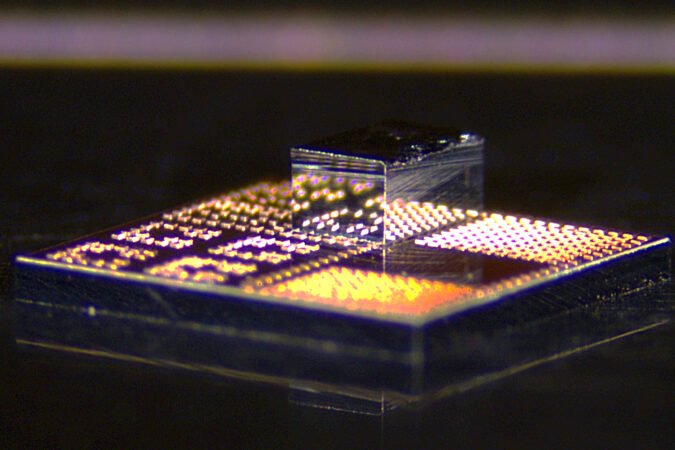Summary Points
-
Revolutionary GaN Integration: MIT researchers developed a low-cost, scalable method to integrate gallium nitride (GaN) transistors onto standard silicon CMOS chips, enhancing performance without large material waste.
-
Enhanced Power Amplifiers: The new process yielded compact power amplifiers that significantly boost signal strength and efficiency, potentially improving mobile communications, wireless bandwidth, and battery life.
-
Temperature Reduction: The design allows for spaced-out GaN transistors on silicon chips, which helps in reducing overall system temperature, enhancing reliability and performance.
- Future Applications: By fitting into existing semiconductor foundries, this technology not only optimizes current electronics but also paves the way for advanced technologies, including quantum computing applications.
New 3D Chips Could Make Electronics Faster and More Energy-Efficient
A recent breakthrough in semiconductor technology could reshape electronics. Researchers at MIT and collaborating institutions developed a low-cost method to integrate gallium nitride (GaN) transistors onto standard silicon chips. This innovation promises to enhance speed and energy efficiency in various electronic devices.
Gallium nitride, already the second most-used semiconductor after silicon, excels in applications such as power electronics and wireless communication. However, its high cost and the complexity of integrating it into traditional systems have hindered widespread adoption. By creating small, discrete GaN transistors, researchers overcame these limitations.
The new fabrication process involves layering tiny GaN transistors onto silicon, then bonding them at low temperatures. This method reduces costs significantly, as only a minimal amount of GaN is required. Consequently, the resulting devices experience a marked performance improvement while generating less heat.
Researchers have successfully demonstrated this approach by creating power amplifiers for mobile phones. These amplifiers show enhanced signal strength and efficiency compared to those made solely with silicon transistors. As a result, smartphone users could enjoy better call quality and longer battery life.
The technology is also future-ready. It has the potential to support advanced applications, including quantum computing. Since GaN performs better than silicon at low temperatures, it paves the way for sophisticated quantum technology development.
“Combining the best of silicon with high-performance gallium nitride could revolutionize many markets,” said Pradyot Yadav, lead author of the study. Experts believe the scalability and cost advantages will drive adoption in existing electronics and future innovations.
As researchers refine this method, the implications extend beyond mobile technology. Industries ranging from defense to telecommunications stand to benefit. The integration method aligns with a broader trend toward improving efficiency and performance in electronic systems.
This revolutionary technique indicates a promising direction for the future of chip technology. As more applications emerge, users can expect faster, energy-efficient devices across the board.
Continue Your Tech Journey
Dive deeper into the world of Cryptocurrency and its impact on global finance.
Explore past and present digital transformations on the Internet Archive.
QuantumV1

